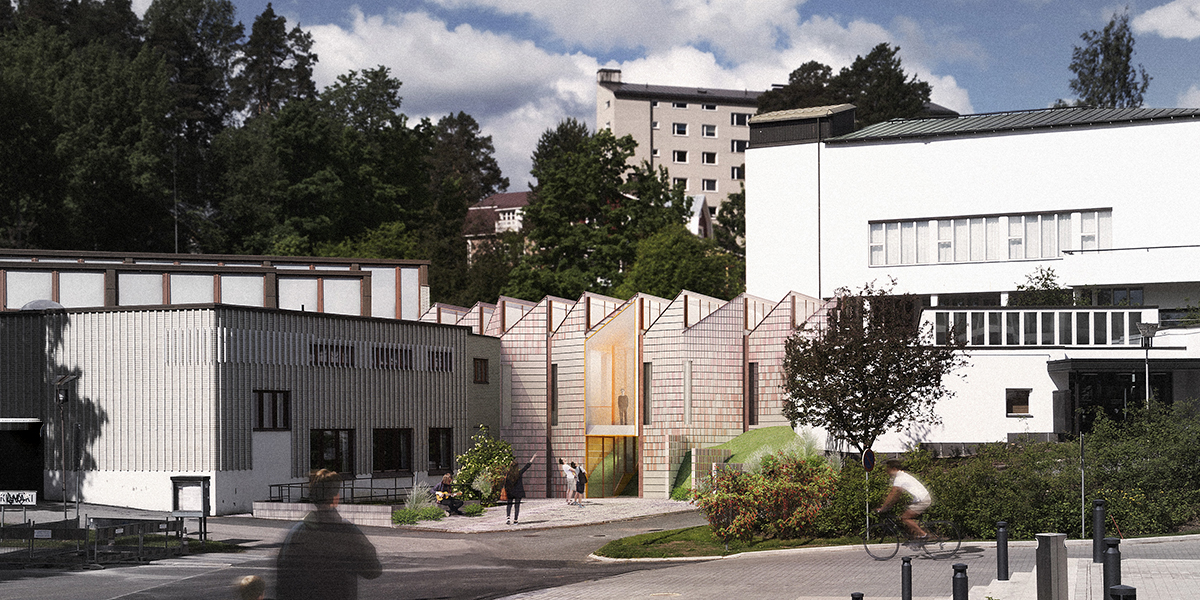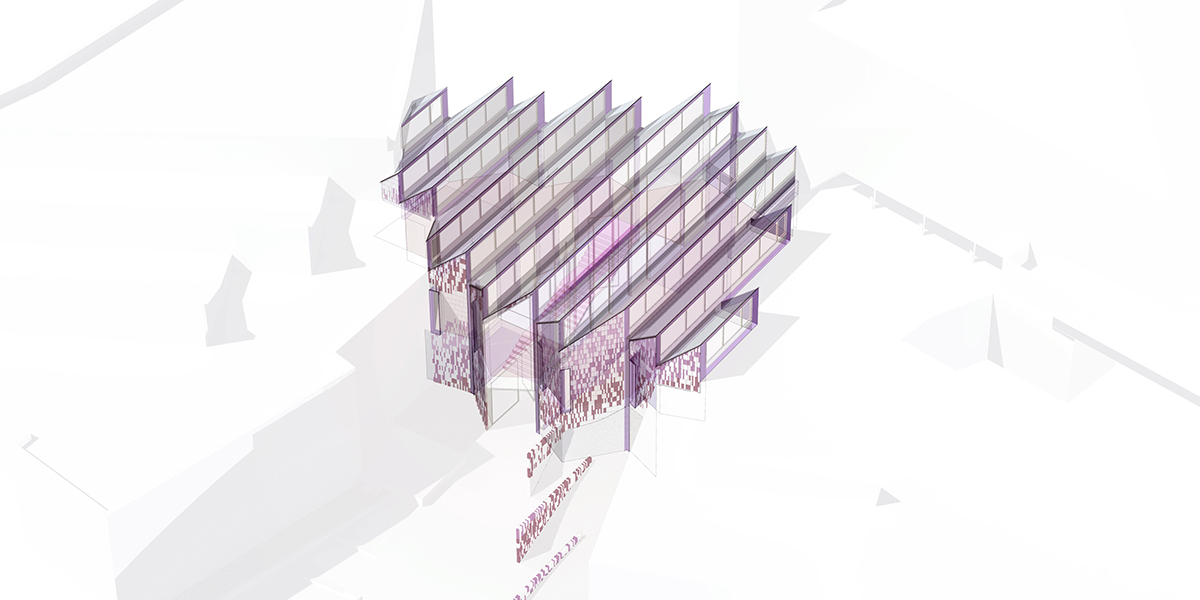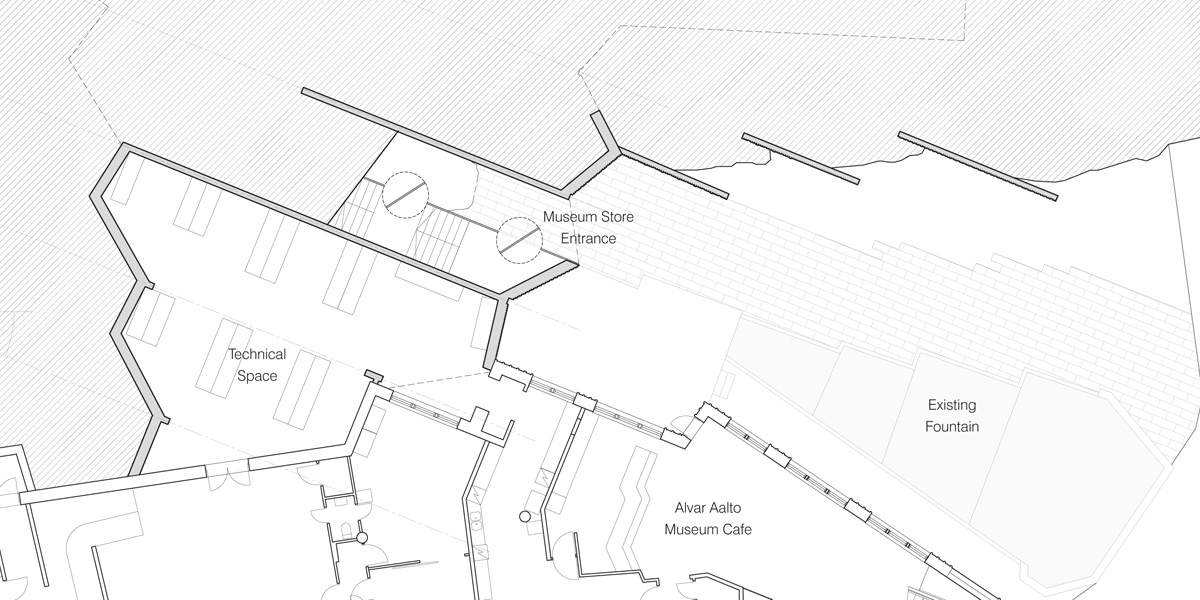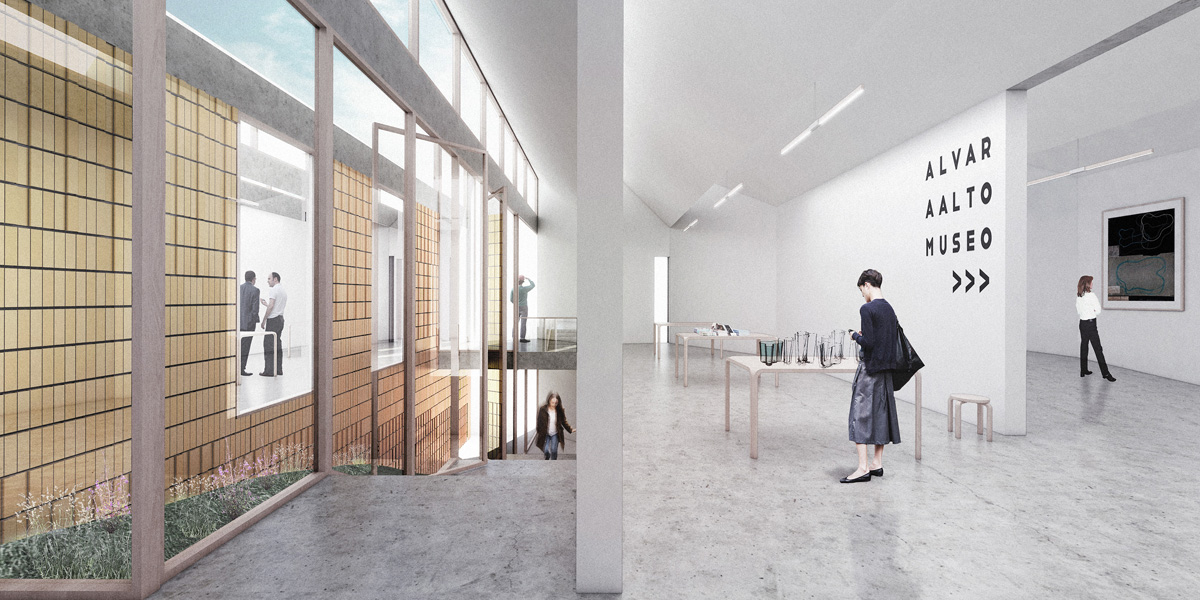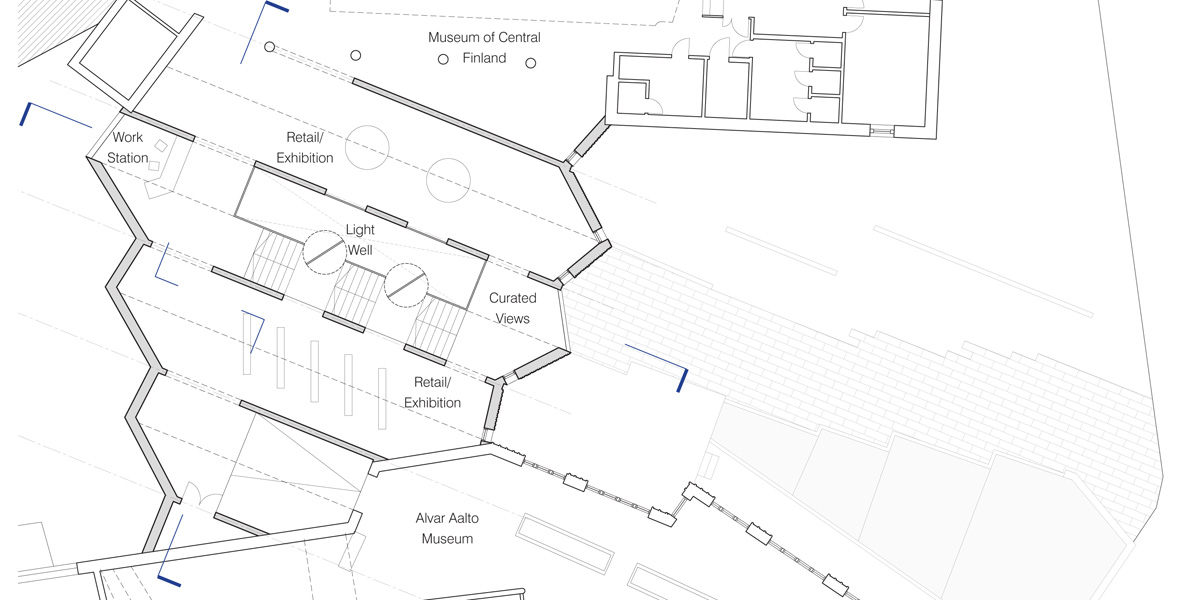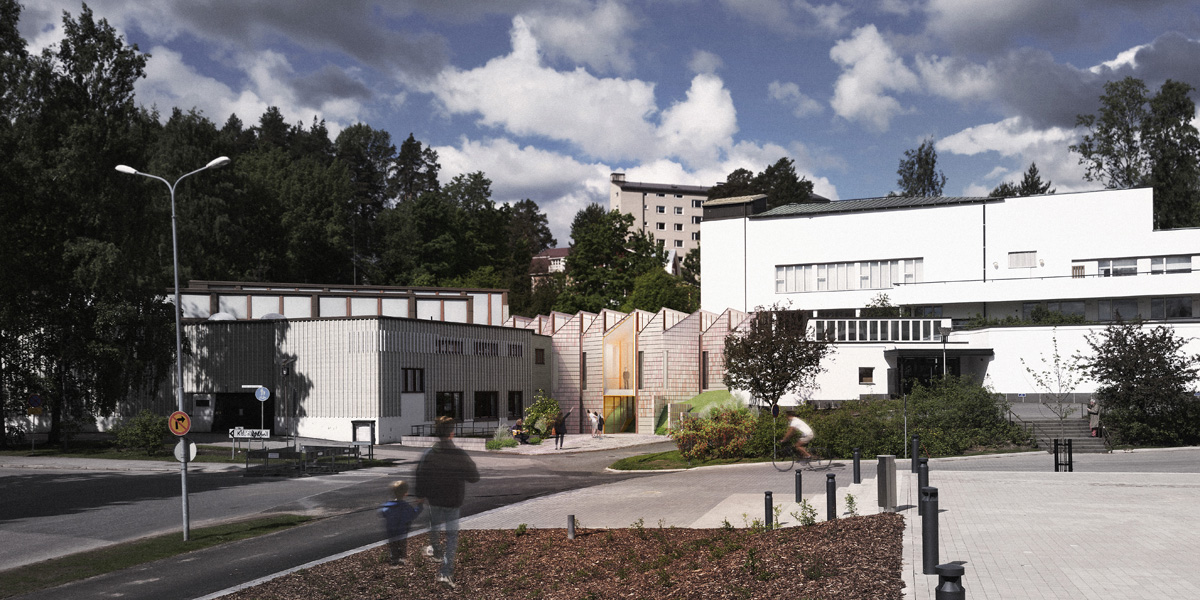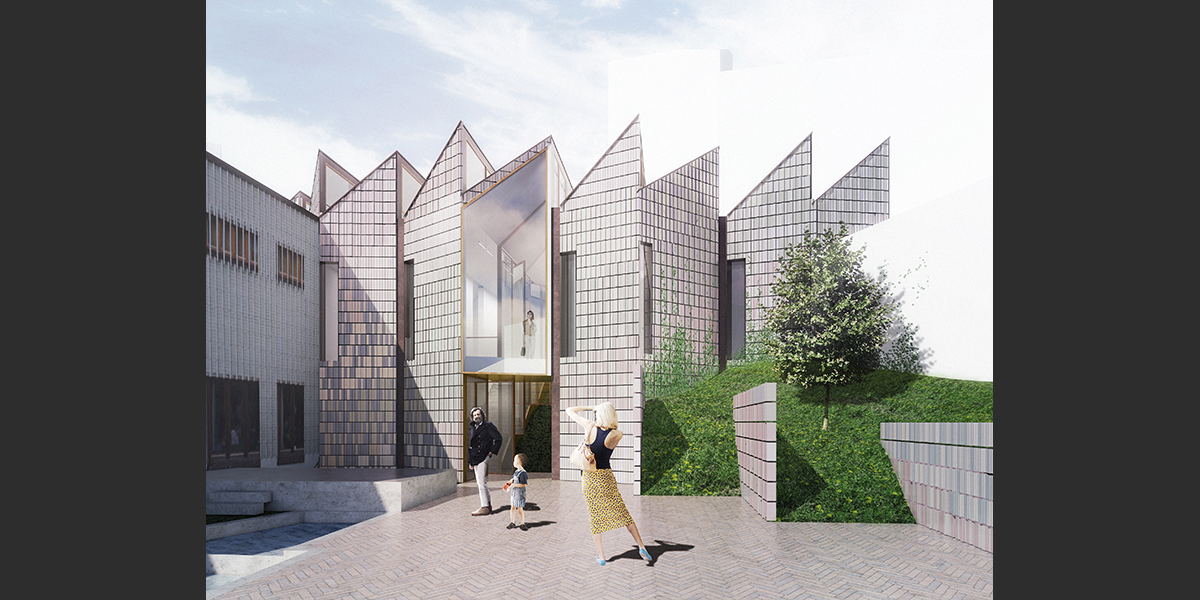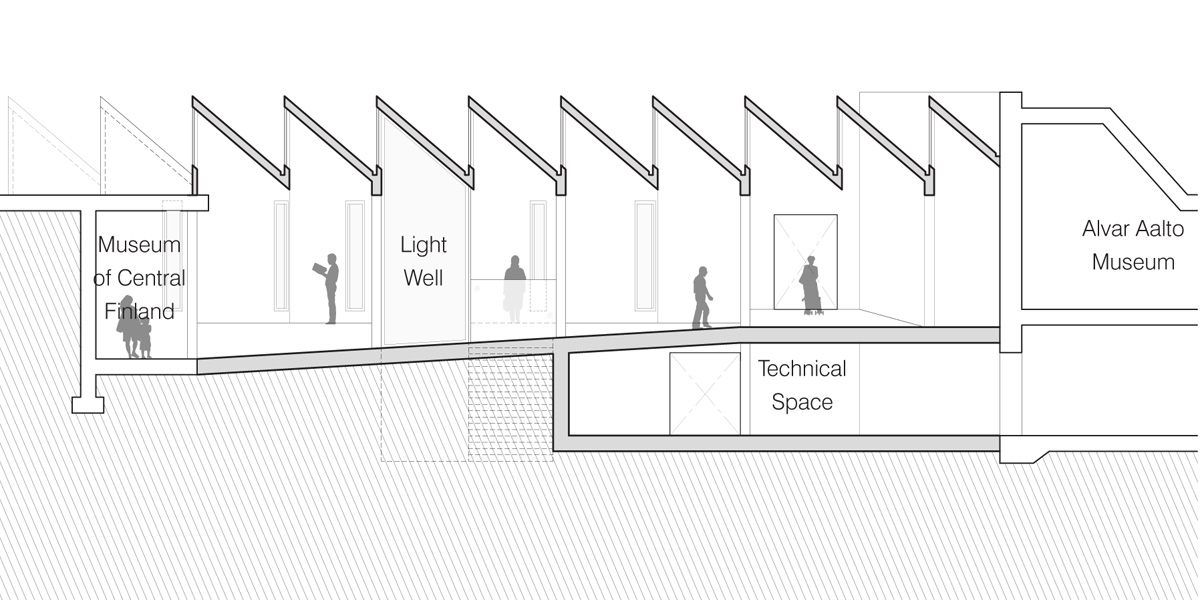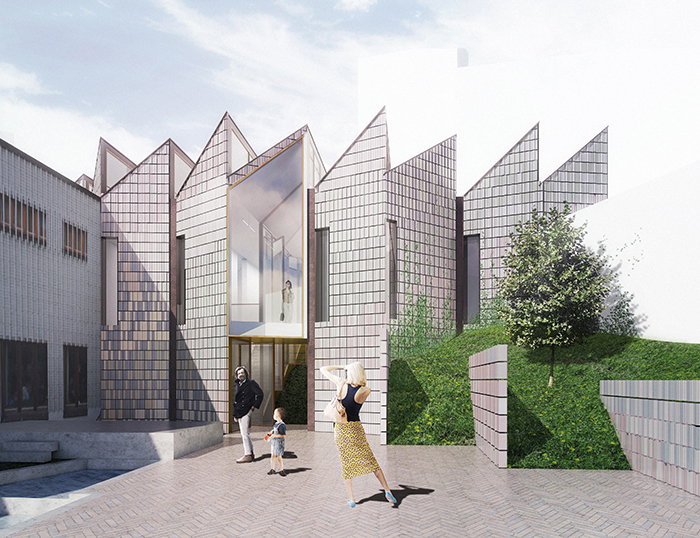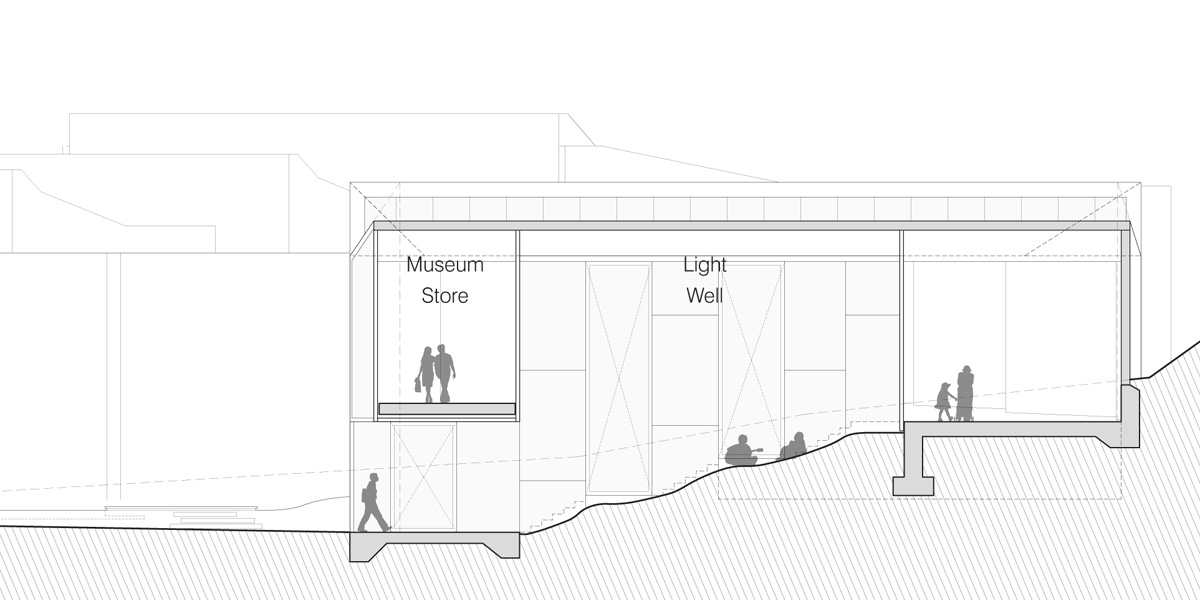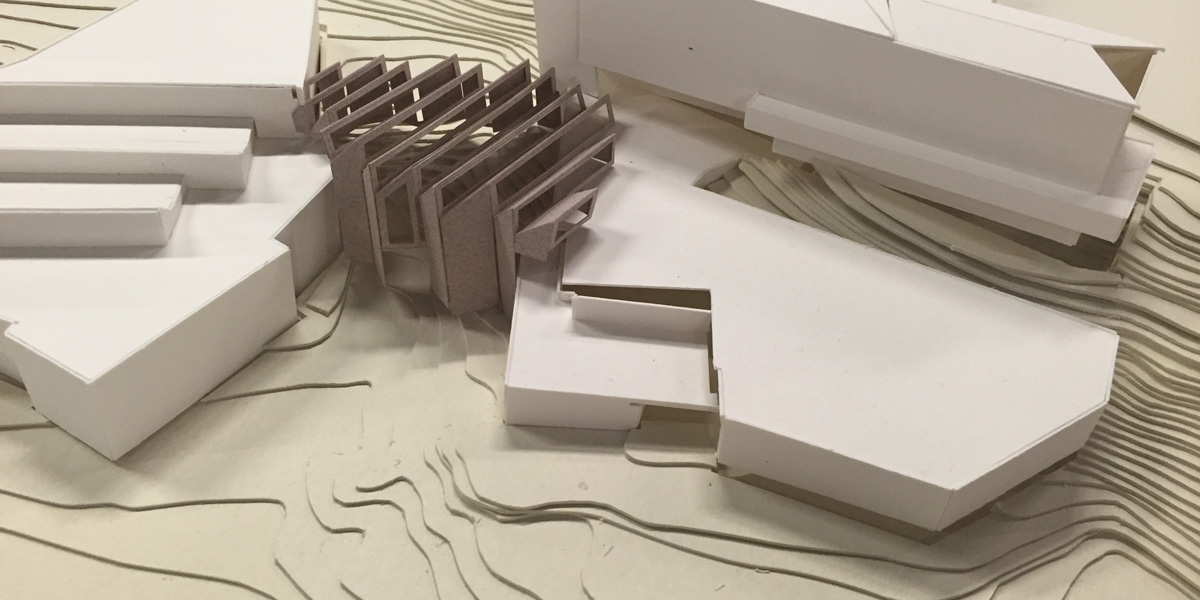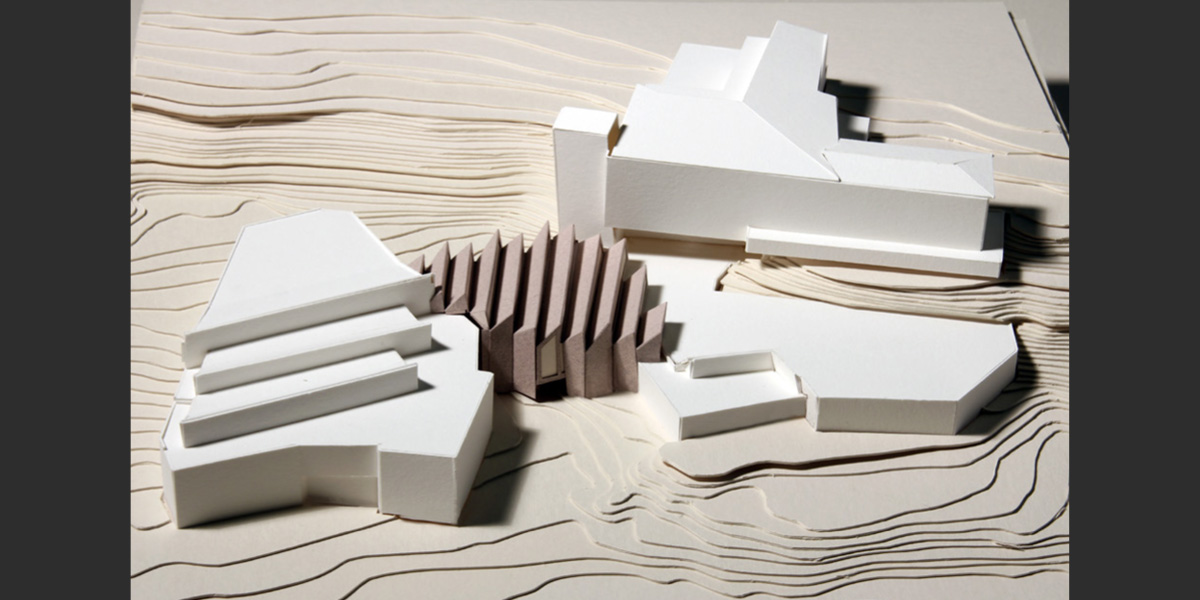Competition entry, 2015
Project Team: Thomas Heltzel, Barak Pliskin, James Quick, Amy Shell, and Margaret Zyro
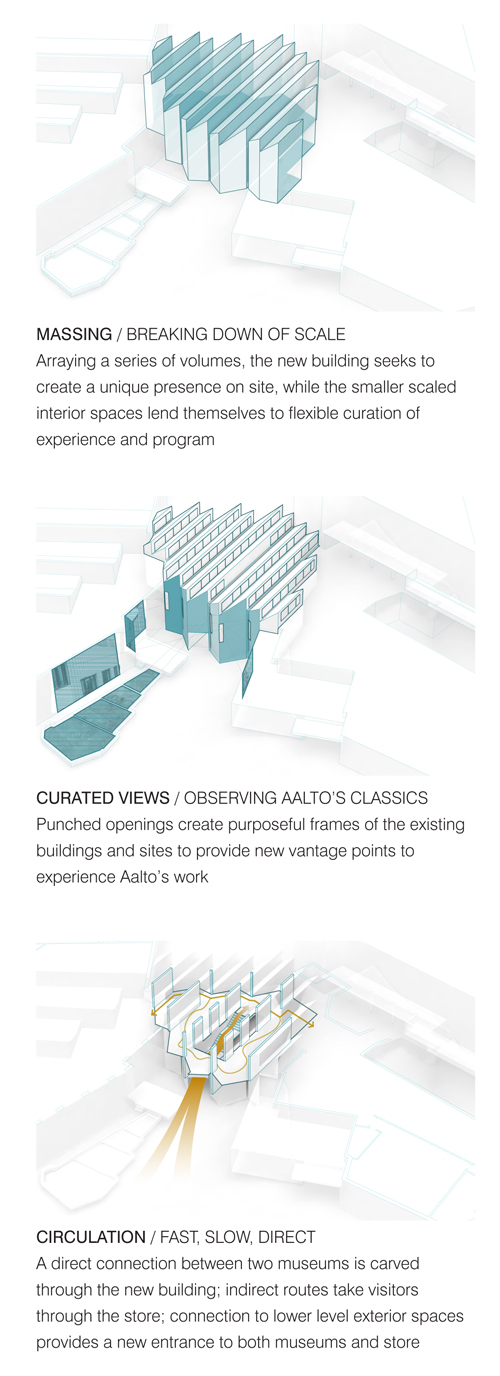
Creating a new structure between two prominent pieces of architecture, the Alvar Aalto Museum and the Museum of Central Finland, presents a challenge of compatibility and fittingness – how can the addition respect its neighbors’ prominence while simultaneously asserting itself as a proud, contemporary expansion to the museum complex, providing new experiences, forms of access, and catalyzing a connection between two Aalto classics. To achieve this, we propose an addition that works at a smaller scale than the large, strong forms of the museums. A series of smaller scale elements array from building to building, defining an aggregation of masses rather than a single form.
These volumes continue to act independently on the interior as well, defining the experience of the museum store itself. A direct connection cuts through the rear of each of each volume, allowing quick access between the two museums. Similarly, a new entrance from the lower level cuts through the central volume, intersecting the direct connection, and creating a new connection to the exterior, both visual and physical. It is this central cut that organizes the programs around it – the direct connection to its west, as well as the museum store that wraps around it, providing movement around the central light well, carving glimpses into it and across it.
The two circulation paths, the direct connection between the museums and the path around the light well, differ in function and speed. The former creates a fast route that allows direct access between the museums, and provides new connections to the outside. The latter creates a slow route, which allows visitors to directly interacts with framed views of the new vantage points, and houses the museum store and alternative exhibition spaces.
The store bypasses standards models of efficiency. The museum store has an opportunity slow down time: to choreograph discontinuity and allow the visitors to lose themselves in contemplation and observation.



